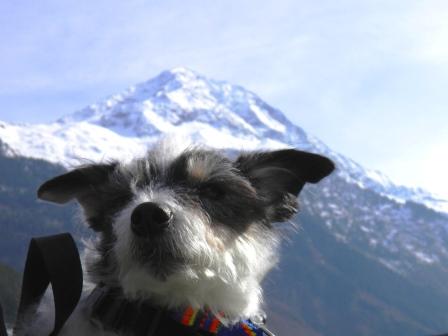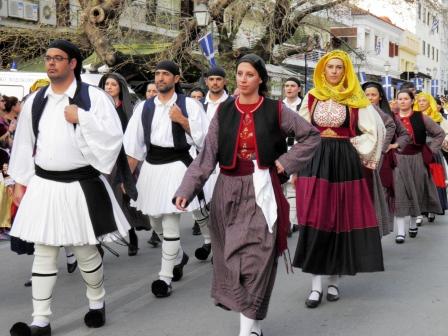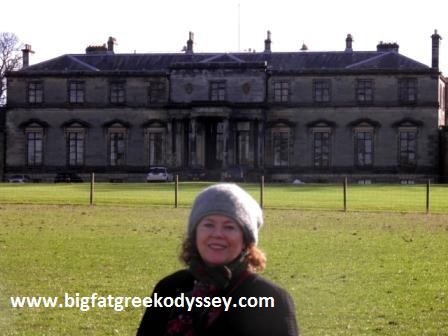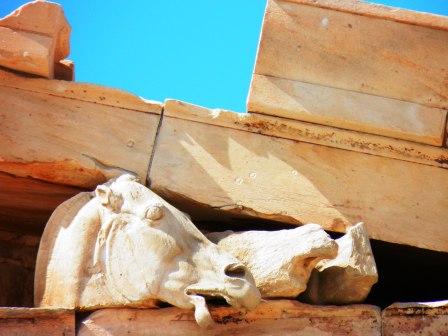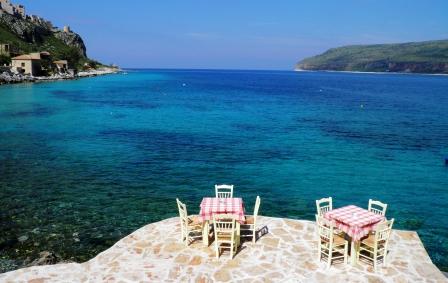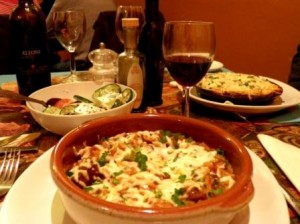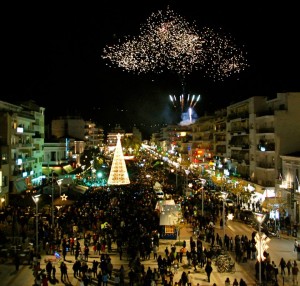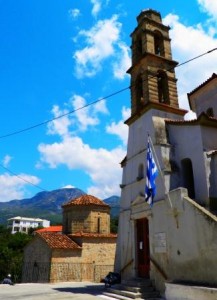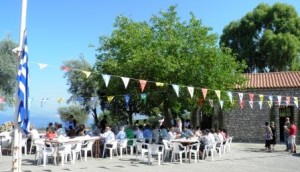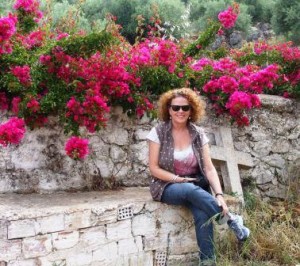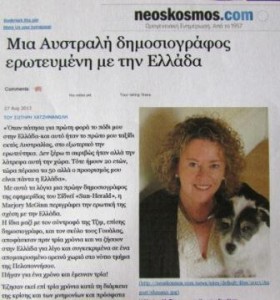WELL that’s us back in Greece for another adventure, but more of an Odyssey-Lite compared with last time. We went by car again so we could accommodate the great travel mutt Wallace and, as before, it created scenes of joy and angst. The joy was seeing how well he behaved in a car packed to the gunwales and how he slept the whole way and only barked at motorway toll collectors. We are in accord on this one.
The angst came in the form of a check-in at an Italian hotel (part of a big chain) that claimed to “take dogs, of course!” We got told off in the foyer by the manager when Wallace did a round of screamy barking at two teenagers who were shouting and skittering about, making Wallace nervous. They were making me nervous as well. One thing I’ve discovered about Wallace over the years is that he’s really quite conventional for a fizzy Jack Russell and, apart from people shouting and screaming, he doesn’t like folk wearing outlandish clothes: funny big hats, eye-watering colours, and so forth. I think most of all he barked because he didn’t like the hotel manager’s outfit: apple green trousers; loafers, no socks; a blueberry-coloured jacket. And I have to agree! What was this? Horticultural couture? But all went well really, most especially when we quit the establishment, our foreheads beading with sweat and Wallace muzzled up this time, and looking like a detained psychopath.
On the trip, we had our first ever satnav and discovered that telling it to find the quickest route anywhere isn’t always a good idea. On our way to a hotel above the shores of Lake Como, the satnav arrow pointed straight across the lake at one stage. What? Did it think we had an amphibious vehicle?
“What’s it trying to tell us here,” said Jim plaintively as we followed the lakeside road, getting closer to the predicted lake plunge. All was revealed, however, when we came to a dead end at a small ferry terminal where it was explained by a grumpy ticket seller that this was the quickest way to the hotel, down the wrong side of the lake and across on the ferry to the town of Bellagio on the other side, where the hotel is situated. How were we to know? But if we’d been much later we’d have missed the last ferry. That wouldn’t have been quick!

The Pappas at the church of the Panayia Eleistria in Koroni handing out the ‘holy light’ on Easter Saturday
Greek drama
Lovely to be back in Greece in spring, and at Easter. We managed three swims in the first week and almost an Easter service every night of Holy Week, and enjoyed the high drama of Great Saturday, outside the church as people held their candles with the “Holy Light” first brought out by the Pappas at midnight and shared to the congregation from there. Bells tolled and fireworks boomed on the periphery and everyone went home, well resurrected, but with their ears ringing.
Koroni has a nice feel, with its harbour and narrow streets winding up to the castle on the top, which was once a stronghold of the Venetians. It’s easy to see why various imperial groups wanted to control it because the castle was almost impregnable and the town out of sight from the sea, cuddled by a high, wooded headland.

The town reaches up to the castle walls which encloses a monastery at the top with superb views on all sides
The castle has been razed now apart from its massive walls but inside is the delightful leafy monastery of the Timios Prodromos, which has only six nuns left. It’s a peaceful, dreamy spot, and the small shop near the entrance has a phenomenal range of items hand-made by these industrious nuns.
It’s one of those monasteries that posts a list of what you can’t do, or wear, inside the monastery church. No trousers for women, which ruled out a church visit for me, though there is still plenty to see here with a fragrant garden with fruit trees and flowers. There are various nooks here to wonder around and touches of drama amid the foliage. A tiny courtyard had a stone entrance with a carved lintel saying: Orthdoxia i Thanatos Orthodoxy or Death. There is also the tiny Byzantine church of Ayia Sophia built beside the ruins of an ancient temple dedicated to Apollo. Some of the original remnants of this temple have made their way into the later walls of the castle.

Remnants of Apollo’s temple at the Prodromos monastery have been cleverly inserted into the later castle walls
Jim was left at the monastery gates with Wallace because we assumed the nuns wouldn’t permit dogs, JRTs especially, but when I mentioned this to one of the nuns later she surprised me by gripping my arm and saying: “Bring him in, we don’t mind.” Ah bless! But take Wallace to a quiet monastery with six genteel nuns wearing unfamiliar headgear, long flappy skirts, and half a dozen aging Easter pilgrims outside the shop trying to enjoy their delicious loukoumi (Turkish delight) and glasses of chilled water? I think not! Maybe on a quieter day.
The house we are staying in here has a wonderful view of Koroni and the sea. My current workplace, a table on the balcony for the laptop, is possibly the best I’ve had for a while but the only problem is keeping Wallace off my chair. He won’t hand it over until I confess what I’m writing about him next. Has he lost the plot? I’ll let you all know soon enough…
GREEK BOOK IN NORTH AMERICA
I AM thrilled to announce that my book about living in the Mani, called Things Can Only Get Feta (Bene-Factum Publishing), is now available in North America, paperback and Kindle. It’s available on Amazon.com and through Barnes & Noble and Longitude Books in America. Longitude has kindly run a story about the book on its blog page called A Favourite Spot.
The go-to blog for writing tips
I was recently interviewed by Athens-based writer Maria Messini on her fascinating blog MM Jaye Writes, under the category Work In Progress. The blog is geared towards writers, their methods, tips, networking secrets and is a fabulous resource for all writers whether they have publishers or are making their own way in the self-publishing world. Read the interview here:
For details about my book Things Can Only Get Feta and other places to buy it please visit our Big Fat Greek Odyssey website, book page
Visit Amazon to buy the book (Kindle version – new edition). A new edition of the paperback will also be available shortly.
Thanks for stopping by.
© Text and photographs copyright of the authors 2014. No content/text or photographs may be copied from the blog without the prior written permission of the authors. This applies to all posts on the blog.

